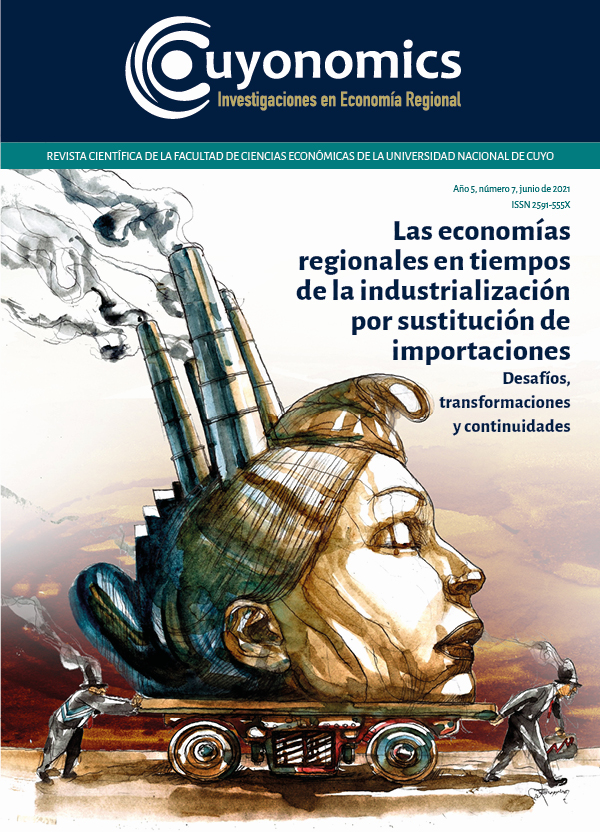The erossive process and it’s incidence in the region: Conservacionism and interaction in the production of farm implements in La Pampa (ca. 1940-1970)
Conservacionismo e interacciones en la producción de implementos agrícolas en La Pampa (ca. 1940-1970)
DOI:
https://doi.org/10.48162/rev.42.028Abstract
To history, there is a phenomenon which has been unpercieved and has affected a wide region of the center of the country; including west of Buenos Aires, south of Córdoba, part of San Luis and east of National Territory of La Pampa. It was a lenghty
draught in the decades of the thirties and the forties that affected, in different ways, to this wide area of Argentina and had a negative impact in agriculture. Furthermore, as a consequence, there was an intense erosive process that required the attention
of local and national authorities because it was a region which it’s main activity depended on primary activity. In this work this problematic is going to be analysed between the years fourty and sixty taking into account the role assumed by Maracó
Industries, a small bussiness which became a symbol of soil conservation, and, in interaction with local technicians, produced essential implements that derived in the landmark of the bussiness by the end of the studied period.
Keywords: erosion, farm practices, soil conservation, Maracó Industries
Downloads
Downloads
Published
How to Cite
Issue
Section
License

This work is licensed under a Creative Commons Attribution-NonCommercial-ShareAlike 4.0 International License.
Los contenidos de la revista se encuentran bajo una licencia CC BY-NC-SA 4.0 (Creative Commons Atribución - No Comercial - Compartir Igual 4.0 Internacional.
Los editores se atienen a lo establecido por la ley 11723 - Régimen Legal de la Propiedad Intelectual.




